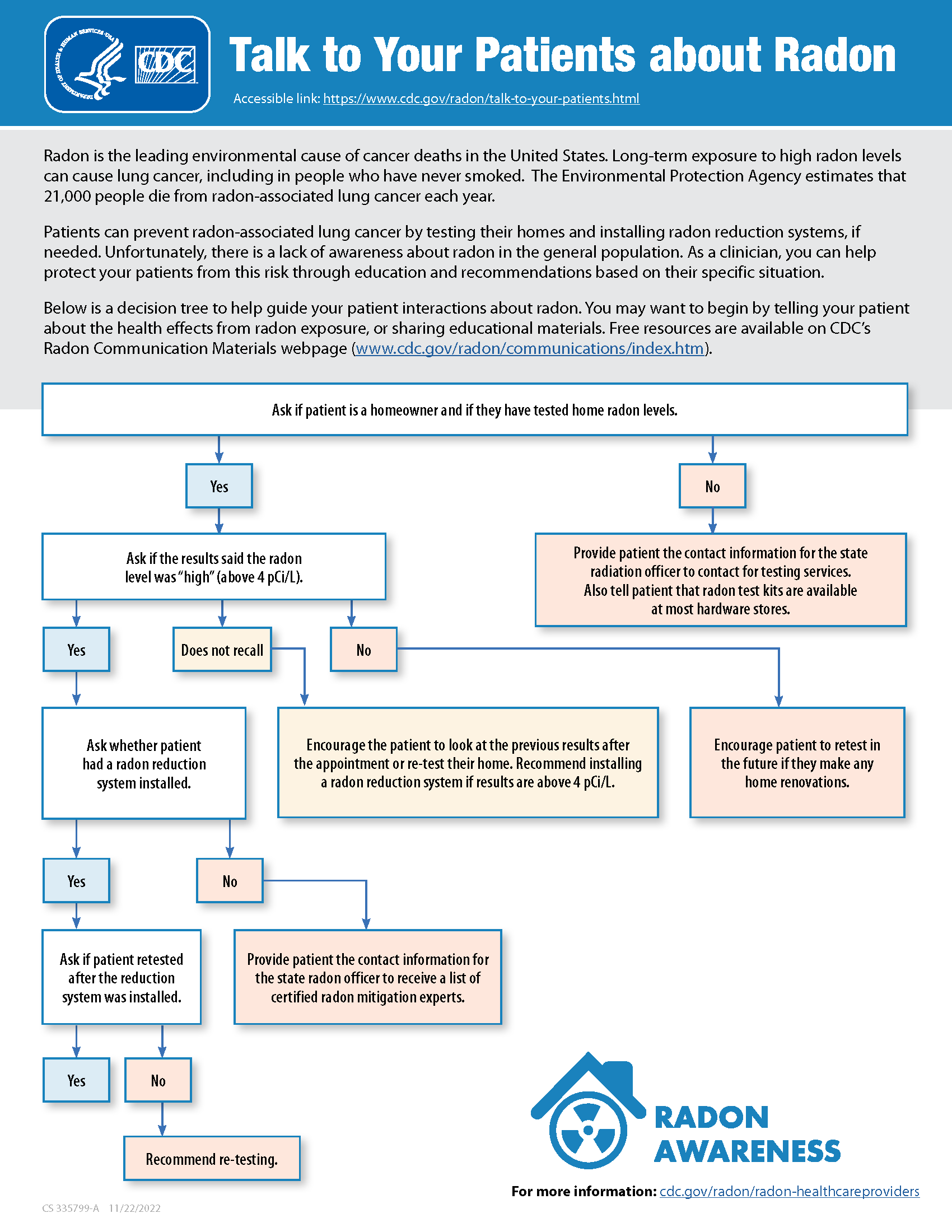Text equivalent
Radon is the leading environmental cause of cancer deaths in the United States. Long-term exposure to high radon levels can cause lung cancer, including in people who have never smoked. The Environmental Protection Agency estimates that 21,100 people die from radon-associated lung cancer each year.
Patients can prevent radon-associated lung cancer by testing their homes and installing radon reduction systems, if needed. Unfortunately, there is a lack of awareness about radon in the general population. As a clinician, you can help protect your patients from this risk through education and recommendations based on their specific situation.
Below is a decision tree to help guide your patient interactions about radon. You may want to begin by telling your patient about the health effects from radon exposure or sharing educational materials. Free resources are available on CDC's Radon Toolkit.
This is a decision tree (algorithm) to help guide clinicians in discussing radon with patients and providing guidance based on different patient situations.
Start by finding out if the patient is a homeowner.
If the patient owns a home, ask whether they have tested their home's radon levels.
If the patient says "no"- Provide patient the contact information for the state radiation officer to contact for testing services. Also tell patient that radon test kits are available at most hardware stores.
If the patient says "yes"- Ask if the results said the radon level was "high" (above 4pCi/L).
- If the patient says "no"- Encourage patient to retest in the future if they make any home renovations.
- If the patient does not recall- Encourage the patient to look at the previous results after the appointment or re-test their home. Recommend installing a radon reduction system if results are above 4 pCi/L.
- If the patient says yes- Ask whether patient had a radon reduction system installed.
If a patient has high radon levels and has NOT had a radon reduction system installed- Provide patient the contact information for the state radon officer to receive a list of certified radon mitigation experts.
If a patient has high radon levels and HAS had a radon reduction system installed- Ask if the patient retested after the reduction system was installed.
- If the patient says yes- You can see if they have any questions.
- If the patients says no- Recommend re-testing.

